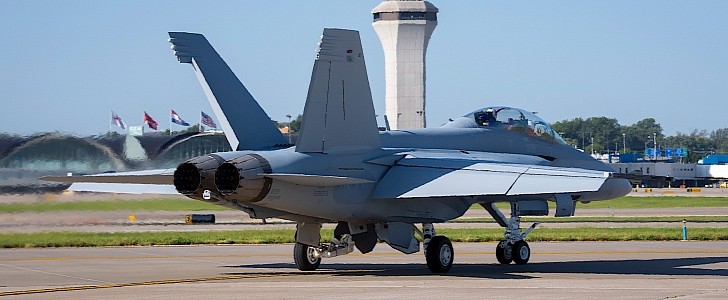We’re used to having cars and motorcycles updated on a regular basis, as they all need to keep pace with advancements made by technology. That “regular basis” is a thing when it comes to the defense sector as well, only here when a change happens, it’s much more impressive, and lasts for a hell of a lot longer.
In the military world, the F/A-18 Super Hornet is presently at the center of an all-out modernization process. Born not that long ago (by aviation standards, at least), in 1995, the Boeing machine is beginning to show its age, and work on getting this winged warrior to above fourth-generation fighter standards is ongoing.
More to the point, Boeing is presently hard at work converting the U.S. Navy variant of the planes to Block III configuration. Those are specs meant to allow the Super Hornets to “do more work and in far less time,” while at the same time “increasing a pilot’s situational awareness.”
In words we can all understand, the planes are getting a cockpit system based on a 10-inch-by-19-inch touch screen display, but also enhanced networking and open mission systems. App-based solutions that will allow upgrades to be made in the coming years are also included.
Mechanically, the Navy fighters get, through undisclosed means, reduced radar signature and an airframe that should be good for about 10,000 flight hours.
Boeing was tasked by the Navy to convert 78 F/A-18 Super Hornets to Block III, making them the most "networked and survivable" in the family. The first operational plane of the bunch was just delivered this week to the Navy.
Work on the rest of the aircraft will continue all the way until 2030, and each of them will have to “complete the U.S. Navy flight test program before deploying to a squadron.”
More to the point, Boeing is presently hard at work converting the U.S. Navy variant of the planes to Block III configuration. Those are specs meant to allow the Super Hornets to “do more work and in far less time,” while at the same time “increasing a pilot’s situational awareness.”
In words we can all understand, the planes are getting a cockpit system based on a 10-inch-by-19-inch touch screen display, but also enhanced networking and open mission systems. App-based solutions that will allow upgrades to be made in the coming years are also included.
Mechanically, the Navy fighters get, through undisclosed means, reduced radar signature and an airframe that should be good for about 10,000 flight hours.
Boeing was tasked by the Navy to convert 78 F/A-18 Super Hornets to Block III, making them the most "networked and survivable" in the family. The first operational plane of the bunch was just delivered this week to the Navy.
Work on the rest of the aircraft will continue all the way until 2030, and each of them will have to “complete the U.S. Navy flight test program before deploying to a squadron.”









